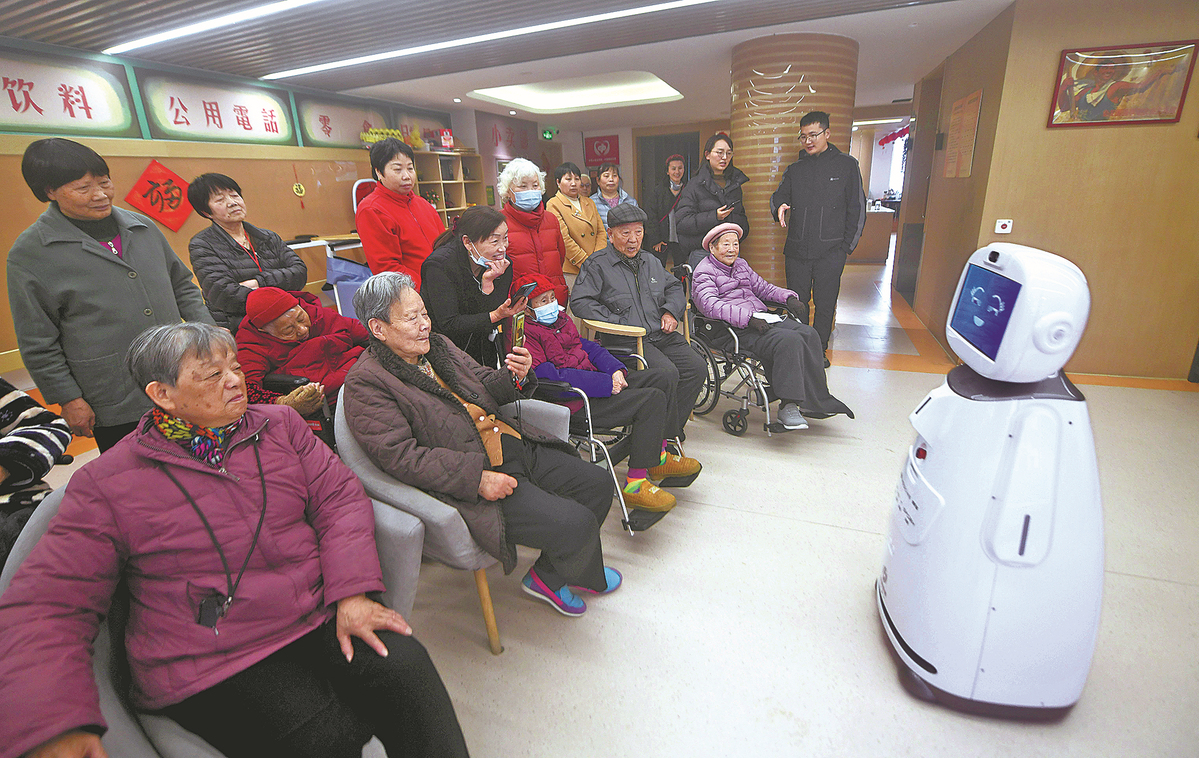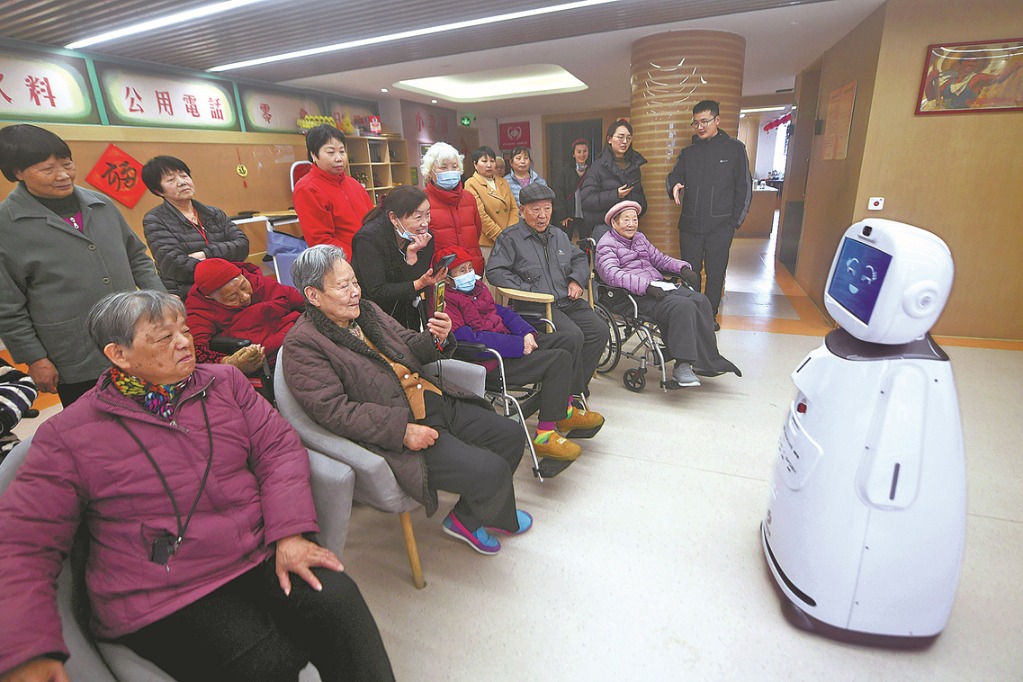Robots play growing role in elderly care
With a rapidly aging population, technology is being used to make up for shortfall in resources


SHENYANG — In a nursing home in South China's Shenzhen, an elderly resident curiously reaches out to hold the hand of Xia Lan, a humanoid robot with lifelike skin, blinking eyes and a warm, soothing voice.
"Can you dance for us?" one senior asks, prompting smiles from those around. "I'm so happy to see robots becoming part of our lives," another resident remarks. "I hope they bring us more convenience."
China is witnessing a rapid integration of artificial intelligence and robotics into elderly care services, offering innovative solutions to the challenges of an aging population.
The latest data shows that by the end of last year, China's population age 60 and above reached 310 million, accounting for roughly 22 percent of its total.
The International Electrotechnical Commission recently released a global standard for elderly care robots. Led by China in its formulation, the standard sets technical benchmarks for product design, manufacturing, testing and certification for such robots.
Elderly care robots, once a distant concept, are quickly becoming a reality for China's aging population.
"Elderly care robots represent an untapped market," said Bi Yalei, secretary-general of the Shenzhen Robots Association. "With pressing issues in senior care, such as mobility assistance, fall prevention and rehabilitation support, many companies in Shenzhen are actively investing in this sector due to strong demand."
Although elderly care robots are still in their infancy compared to industrial robots, some users have already begun to experience the convenience they offer.























